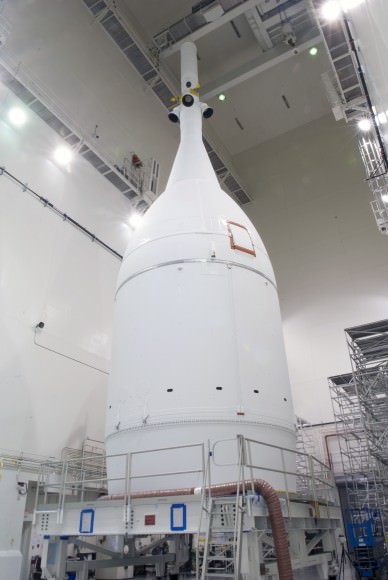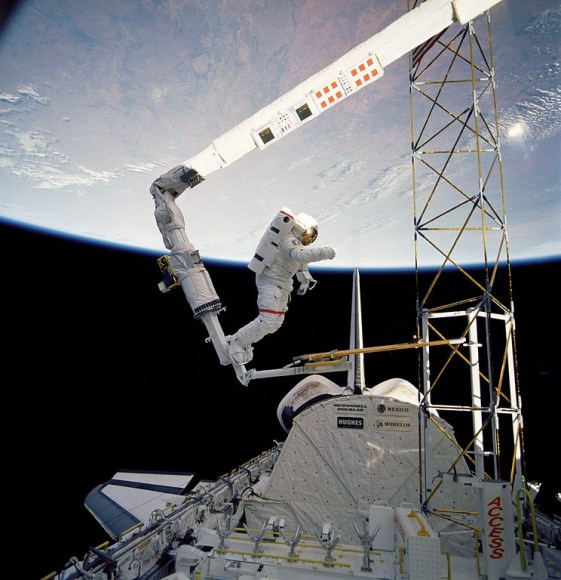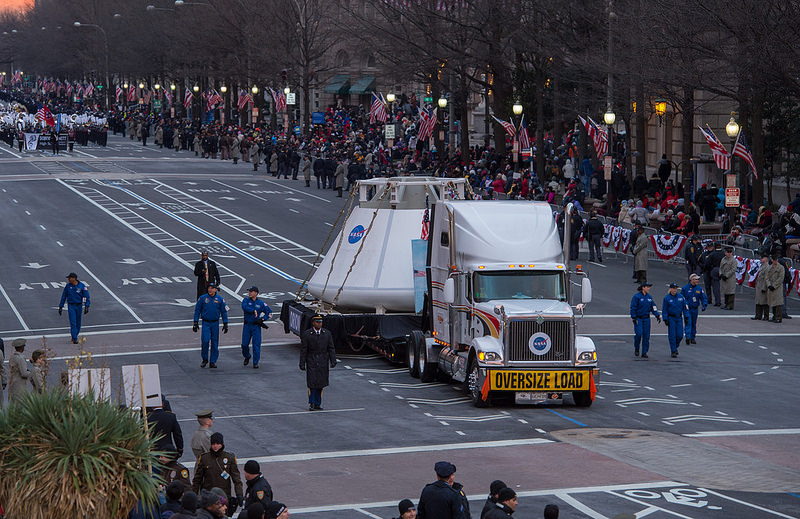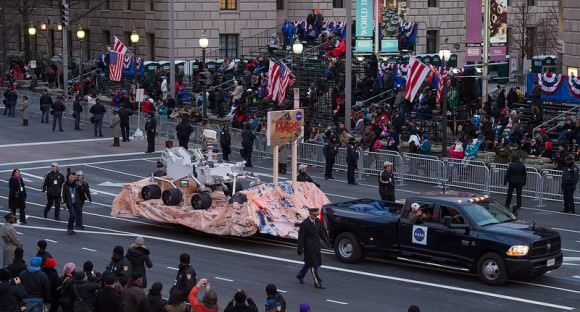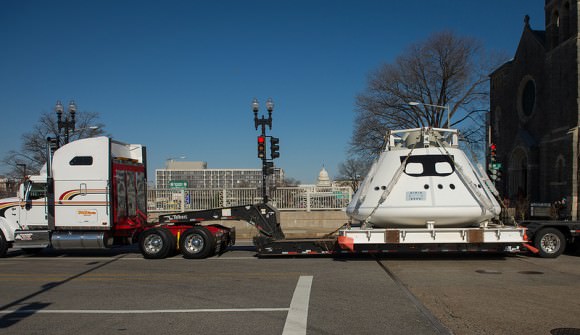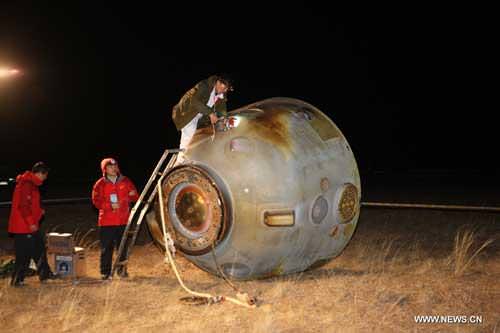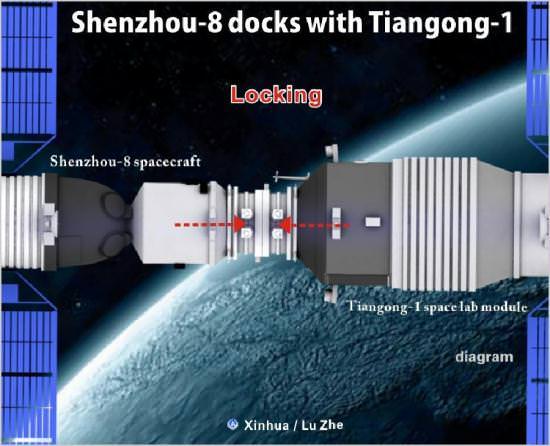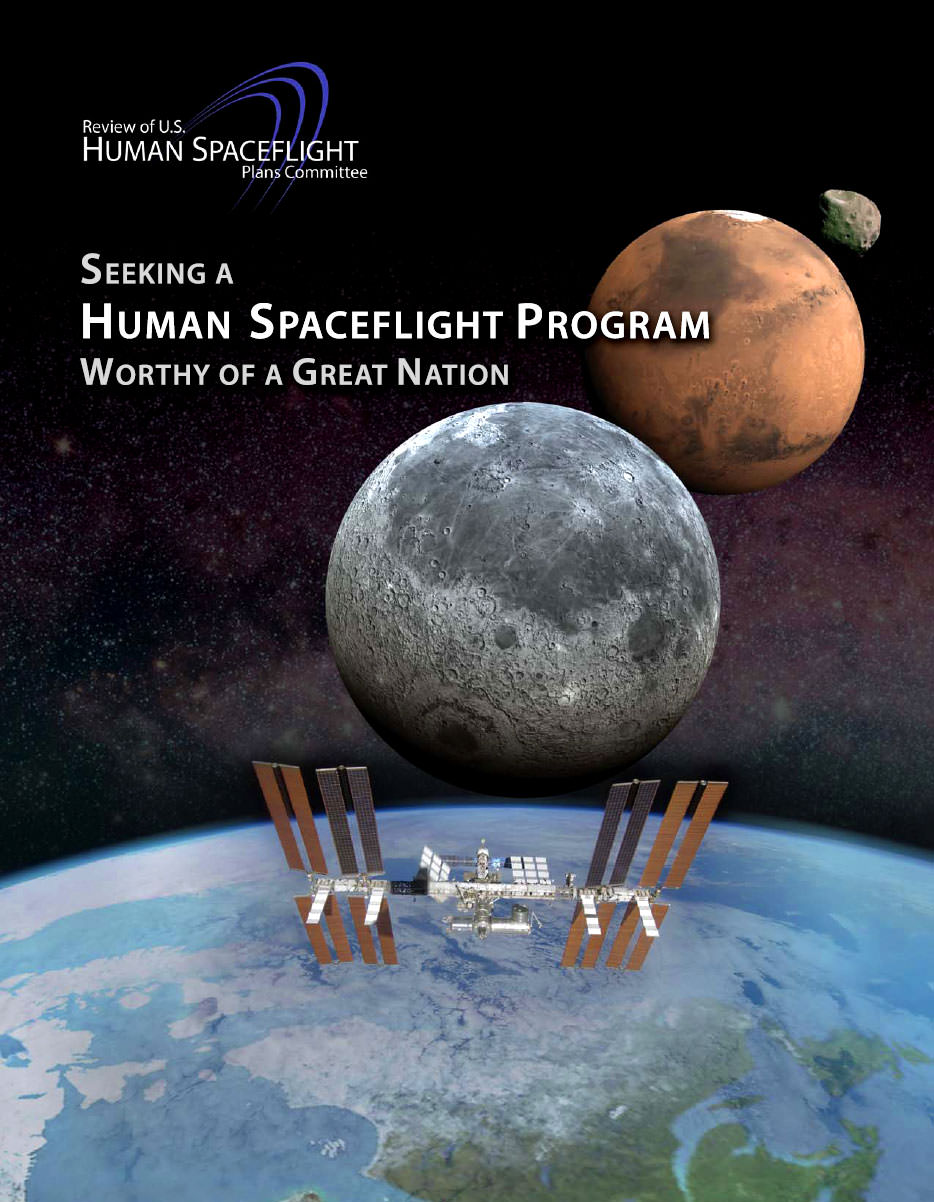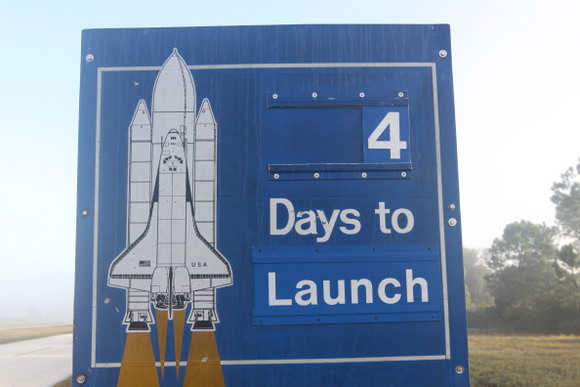Name someone who at some point in their life didn’t want to be an astronaut. The answer is no one. Ask any kid what they want to be when they grow up and they all say an astronaut. Being an astronaut is the ultimate dream job for everyone of all ages. Why? Because you get to go to space, and there’s nothing cooler than going into space. For context, even if you’re not a sports fan you have watched the Super Bowl at least once in your life. It is one of the most watched and most lauded sports championship games in the entire world, and yet despite all its media attention and halftime shows and all-time great finishes, the Super Bowl still holds a candle to being able to go to space. Eat your heart out, Tom Brady. Going into space is just awesome, and there’s nothing like it.
Continue reading “Crew-4 is off to the Station”NASA’s 1st Orion Complete and Ready to Roll to Launch Pad
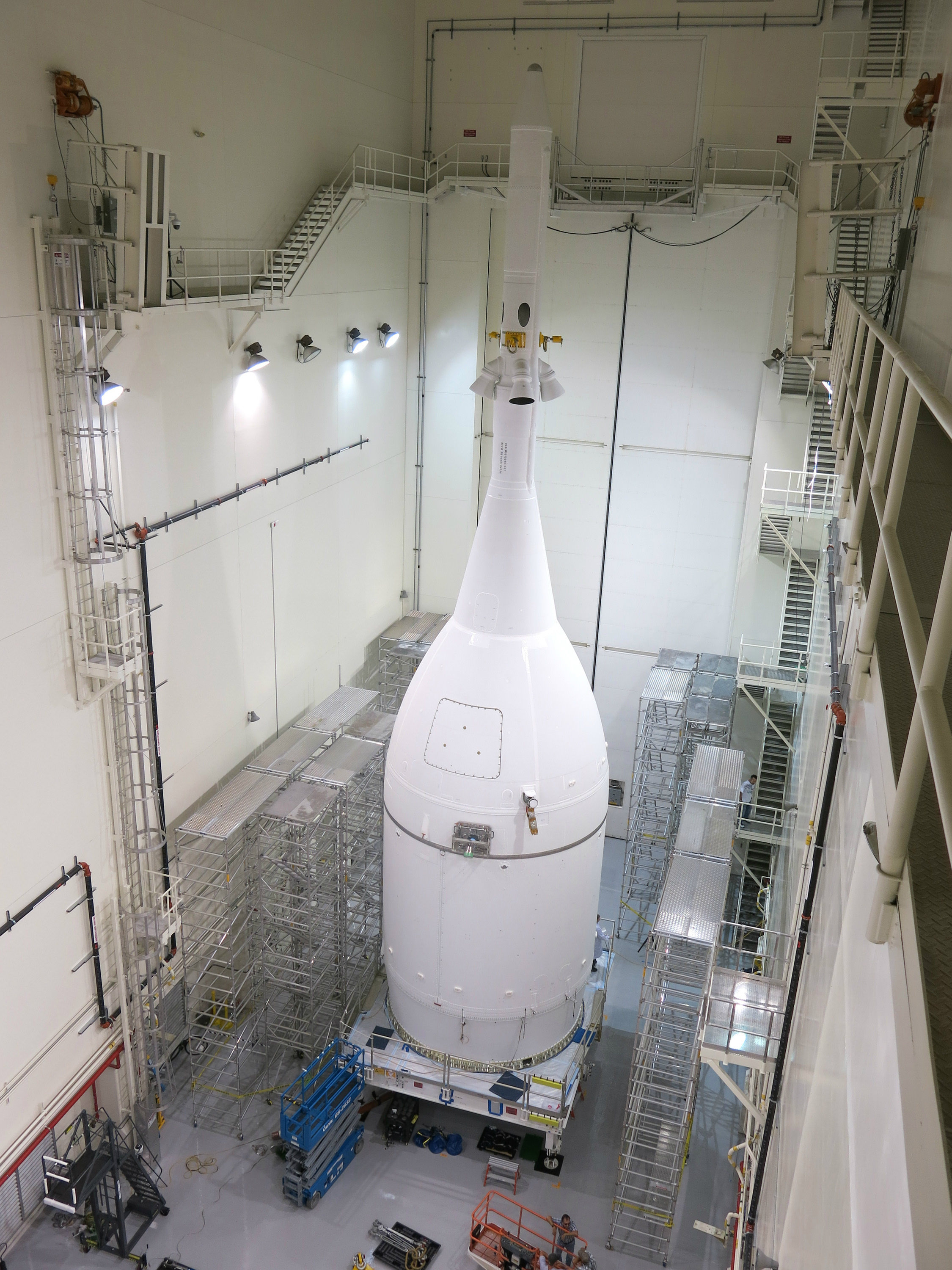
Technicians at the Kennedy Space Center have put the finishing touches on NASA’s first Orion crew module, marking the conclusion of NASA’s multi-year-long effort to build and prepare the vehicle for its maiden launch in December and take the first steps towards sending humans back to deep space in four decades since Apollo.
The Orion spacecraft is all set to be rolled out from Kennedy’s Launch Abort System Facility to Launch Complex 37 at Cape Canaveral Air Force Station on Monday evening, Nov 10.
Orion is slated to liftoff on its first unmanned orbital test flight, dubbed Exploration Flight Test-1 (EFT-1), on Dec. 4.
Orion is NASA’s next generation human rated vehicle that will eventually carry America’s astronauts beyond Earth on voyages venturing farther into deep space than ever before – beyond the Moon to Asteroids, Mars, and other destinations in our Solar System.
The fully assembled Orion vehicle stack consists of the crew module, service module, launch abort system and adapter, residing on a transporter in Kennedy’s Launch Abort System Facility.
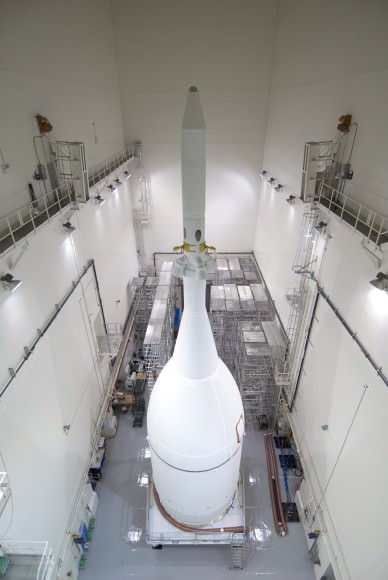
“This is just the first of what will be a long line of exploration missions beyond low earth orbit, and in a few years we will be sending our astronauts to destinations humans have never experienced,” said Bill Hill, deputy associate administrator for Exploration Systems Development, in a statement.
“It’s thrilling to be a part of the journey now, at the beginning.”
After arriving at pad 37, the Orion stack will be hoisted and installed atop the United Launch Alliance Delta IV Heavy rocket that will carry it into space for its uncrewed EFT-1 maiden flight test.
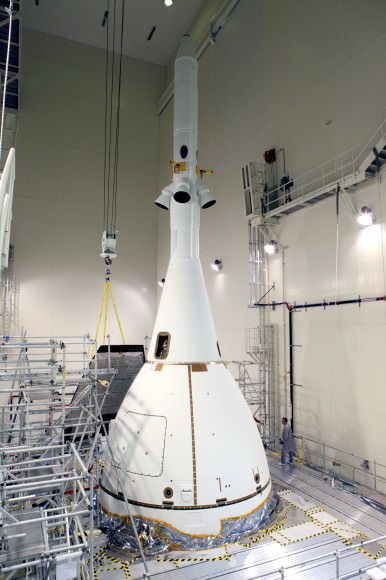
The maiden blastoff of the state-of-the-art Orion spacecraft on the EFT-1 mission is slated for December 4, 2014, from Space Launch Complex 37 (SLC-37) at Cape Canaveral Air Force Station in Florida atop the triple barreled United Launch Alliance (ULA) Delta IV Heavy booster.
The two-orbit, four and a half hour EFT-1 flight around Earth will lift the Orion spacecraft and its attached second stage to an orbital altitude of 3,600 miles, about 15 times higher than the International Space Station (ISS) – and farther than any human spacecraft has journeyed in 40 years.
It will test the avionics and electronic systems inside the Orion spacecraft.
Then the spacecraft will travel back through the atmosphere at speeds approaching 20,000 mph and temperatures near 4,000 degrees Fahrenheit to test the heat shield, before splashing down for a parachute assisted landing in the Pacific Ocean.
“NASA is pushing the boundaries of exploration and working hard to send people to Mars in the future,” said Mark Geyer, Orion Program manager, in a NASA statement.
“When we set foot on the Red Planet, we’ll be exploring for all of humanity.”
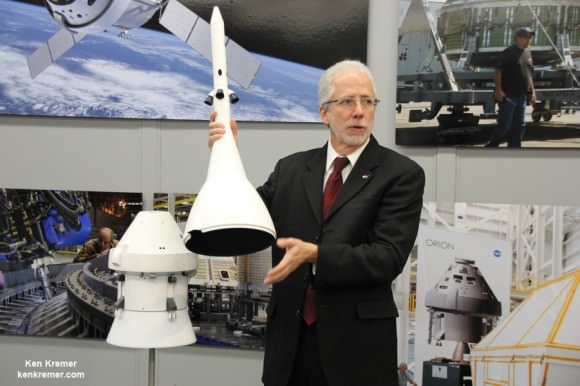
Watch for Ken’s Orion coverage and he’ll be at at KSC for the launch on Dec. 4.
Stay tuned here for Ken’s continuing Orion and Earth and planetary science and human spaceflight news.
Assembly Complete for NASA’s Maiden Orion Spacecraft Launching in December 2014
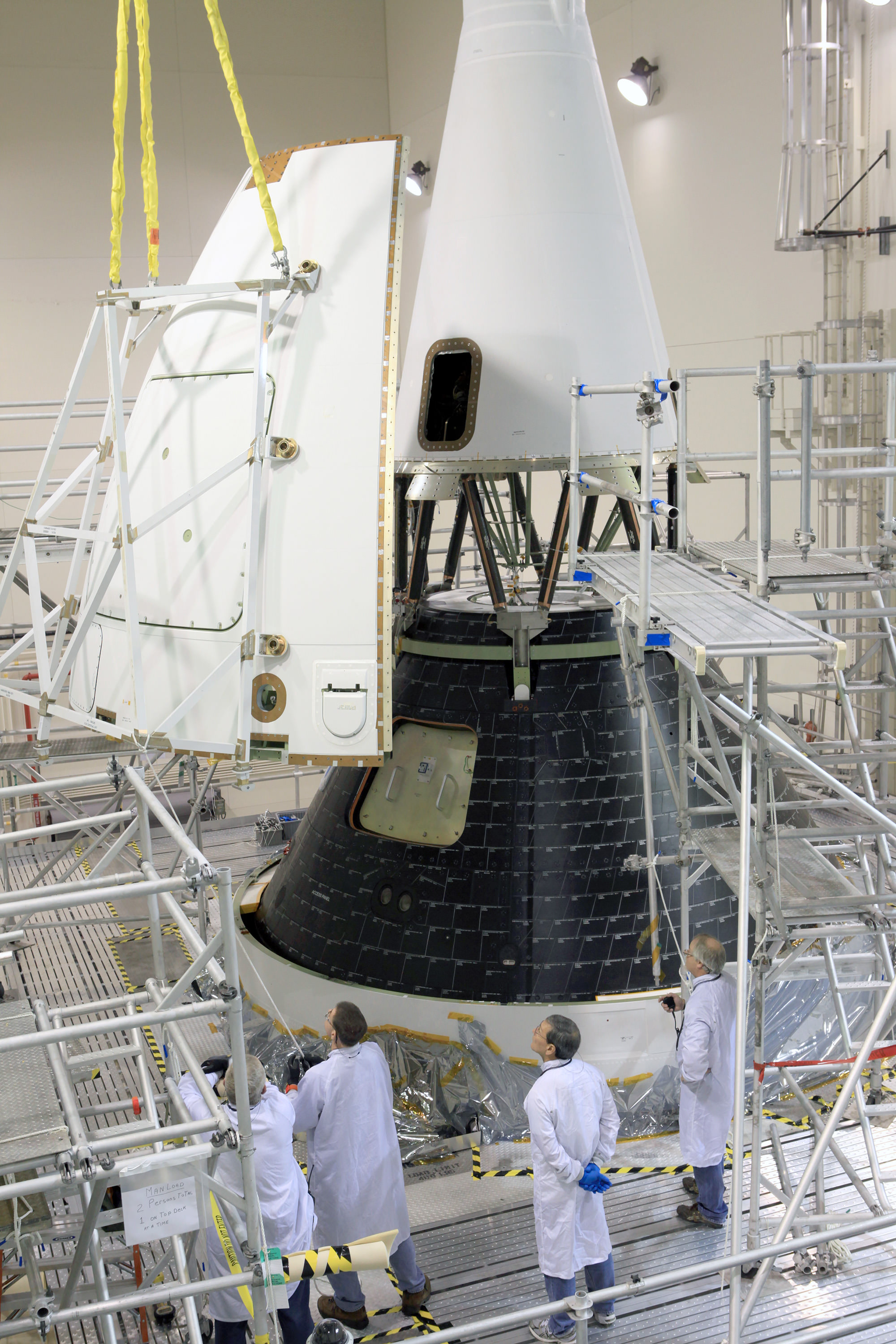
Technicians at the Kennedy Space Center have completed the final major assembly work on NASA’s maiden Orion crew module slated to launch on its first unmanned orbital test flight this December, dubbed Exploration Flight Test-1 (EFT-1)
After first attaching the Launch Abort System (LAS) to the top of the capsule, engineers carefully installed a fairing composed of a set of four ogive panels over the crew module and the abort systems lower structural framework joining them together.
“The ogive panels smooth the airflow over the conical spacecraft to limit sound and vibration, which will make for a much smoother ride for the astronauts who will ride inside Orion in the future,” according to a NASA description.
Upon finishing the panel assembly work inside the Launch Abort System Facility (LASF) at NASA’s Kennedy Space Center, the teams cleared the last major hurdle before the Orion stack is rolled out to launch pad 37 in mid-November and hoisted to the top of the Delta IV Heavy rocket.

The Orion stack is comprised of the LAS, crew module (CM) and service module (SM).
The maiden blastoff of the state-of-the-art Orion spacecraft on the EFT-1 mission is slated for December 4, 2014, from Space Launch Complex 37 (SLC-37) at Cape Canaveral Air Force Station in Florida atop the triple barreled United Launch Alliance (ULA) Delta IV Heavy booster.
Orion is NASA’s next generation human rated vehicle that will eventually carry America’s astronauts beyond Earth on voyages venturing farther into deep space than ever before – beyond the Moon to Asteroids, Mars, and other destinations in our Solar System.
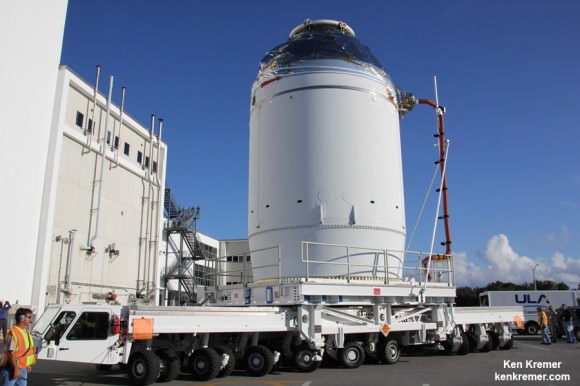
The two-orbit, four and a half hour EFT-1 flight around Earth will lift the Orion spacecraft and its attached second stage to an orbital altitude of 3,600 miles, about 15 times higher than the International Space Station (ISS) – and farther than any human spacecraft has journeyed in 40 years. It will test the avionics and electronic systems inside the Orion spacecraft.
Then the spacecraft will travel back through the atmosphere at speeds approaching 20,000 mph and temperatures near 4,000 degrees Fahrenheit to test the heat shield, before splashing down for a parachute assisted landing in the Pacific Ocean.
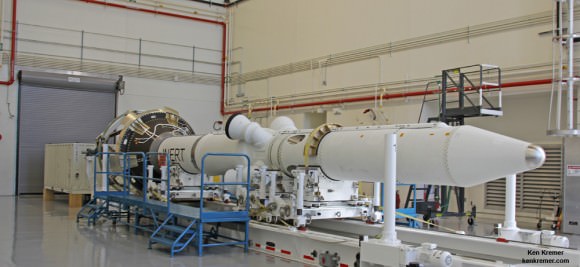
The LAS plays a critically important role to ensure crew safety.
In case of an emergency situation, the LAS is designed to ignite within milliseconds to rapidly propel the astronauts inside the crew module away from the rocket and save the astronauts’ lives. The quartet of LAS abort motors would generate some 500,000 pounds of thrust to pull the capsule away from the rocket.
And don’t forget that you can fly your name on Orion and also print out an elegant looking “boarding pass.”
Details below and in my article – here.
NASA announced that the public can submit their names for inclusion on a dime-sized microchip that will travel on Orion and succeeding spacecraft voyaging to destinations beyond low-Earth orbit, including Mars.
The deadline to submit your name is soon: Oct 31, 2014.
Click on this weblink posted online by NASA today: http://go.usa.gov/vcpz
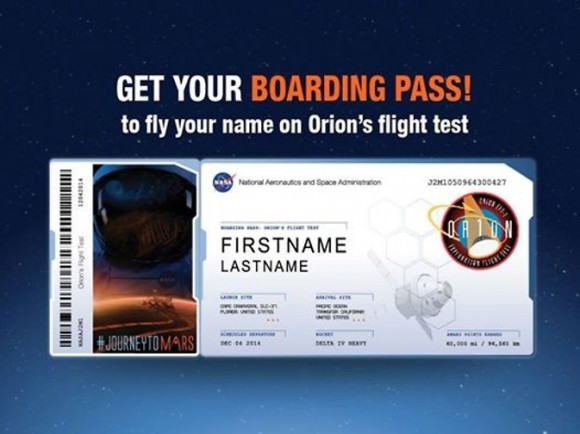
“NASA is pushing the boundaries of exploration and working hard to send people to Mars in the future,” said Mark Geyer, Orion Program manager, in a NASA statement.
“When we set foot on the Red Planet, we’ll be exploring for all of humanity. Flying these names will enable people to be part of our journey.”

Stay tuned here for Ken’s continuing Orion and Earth and planetary science and human spaceflight news.
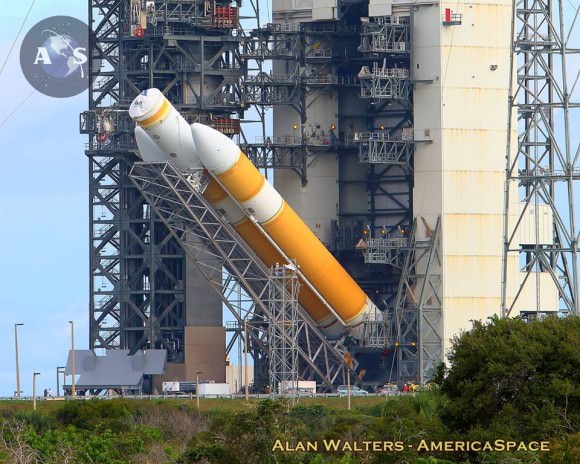
…………….
Learn more about Orion, Space Taxis, and NASA Human and Robotic Spaceflight at Ken’s upcoming presentations:
Oct 26/27: “Antares/Cygnus ISS Rocket Launch from Virginia”; Rodeway Inn, Chincoteague, VA
Tito Wants to Send Married Couple on Mars Flyby Mission
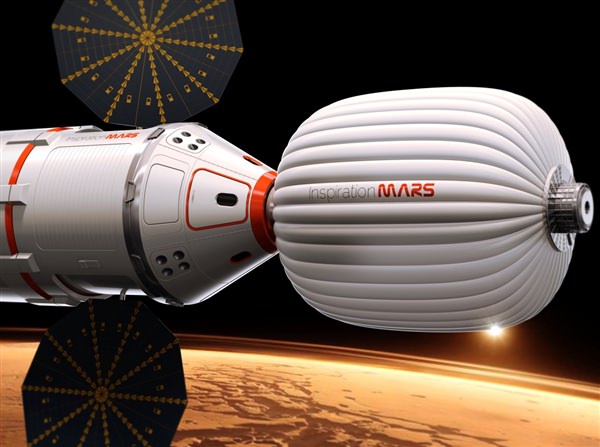
Millionaire and space tourist Dennis Tito announced his plans for funding a commercial mission to Mars, and the mission will send two professional crew members – one man and one woman who will likely be a married couple – flying as private citizens on a “fast, free-return” mission, passing within 100 miles of Mars before swinging back and safely returning to Earth. The spacecraft will likely be tinier than a small Winnebago recreational vehicle. Target launch date is Jan. 5, 2018.
That date was picked because of the unique window of opportunity when the planets align for a 501-day mission to Mars and back.
“If we don’t seize the moment we might miss the chance to become a multi-planet species,” said journalist Miles O’Brien, who introduced the Inspiration Mars team at a webcast announcing the mission, “and if we don’t do that, one day humanity might cease to exist.”
Tito said there are lots of reasons to not to do a mission like this, “but sometimes you just have to lift anchor shove off. We need to stop being timid… Our goal is to send two people but take everyone along for the ride.”
Tito has started a new nonprofit organization, the Inspiration Mars Foundation, “to pursue the audacious to provide a platform for unprecedented science, engineering and education opportunities, while reaching out to American youth to expand their visions of their own futures in space exploration,” said a statement released by the Foundation.
Tito said this will be an American mission, not international.
The mission will be built around “proven, existing space transportation systems and technologies derived from industry, NASA and the International Space Station that can be available in time to support the launch date.”
Inspiration Mars has signed a Space Act Agreement with NASA, specifically the Ames Research Center (Ames), to conduct thermal protection system and technology testing and evaluation, as well as tapping into NASA’s knowledge, experience and technologies.
“We went to NASA and said we don’t want money, but want to partner with you for certain technologies,” said said Taber MacCallum, chief technology officer for Inspiration Mars. MacCallum is also CEO/CTO of Paragon Space Development Corporation, and was a member of the Biosphere 2 Design, Development, Test & Operations team, and a crew member in the first two-year mission. “NASA had a tremendous can-do spirit about this, and we are thrilled to be working with them.”
Here’s look at the mechanics of the free return trajectory:
The profile of the mission means once it launches, there’s no way to abort.
Tito said the mission will engage “the best minds in industry, government and academia to develop and integrate the space flight systems and to design innovative research, education and outreach programs for the mission. This low-cost, collaborative, philanthropic approach to tackling this dynamic challenge will showcase U.S. innovation at its best and benefit all Americans in a variety of ways.”
Inspiration Mars will also offer educational programs to inspire children.
“It is important that it is a man and a woman going on this mission because they represent humanity,” said Jane Poynter, also with Paragon and Inspiration Mars, who is married to MacCallum, and together they were part of the Biosphere-2 project. “But more importantly, it represents our children, because whether they are a boy or a girl, they will see themselves in this mission. Inspiration is the name of this mission and its mission.”
She said it would “challenge our children to live audacious lives,” and Inspiration Mars is partnering with several organizations to create educational programs.
Poynter said it would be important for the two astronauts to be married, to provide a “backbone of support for the crew psychologically.
“Imagine, it’s a really long road trip and you’re jammed into an RV and you can’t get out,” Poynter said. “There’s no microgravity … all you have to eat for over 500 days are 3,000 lbs of dehydrated food that they rehydrate with the same water over and over that will be recycled,” adding that the two crew will need the proven ability to be with each other for the long term.
But that segue ways into how the mission will be funded. While Tito will fund the mission exclusively for the next two years, beyond that it will be funded primarily through private, charitable donations, as well as government partners that can provide expertise, access to infrastructure and other technical assistance.
But media rights will be a big part of funding, Tito said. “I envision Dr. Phil talking to the husband-wife crew about marital problems on way to Mars,” he said.
But this is not a money-making endeavor, Tito said. “I won’t make any money on this – I’ll be a lot poorer after this mission.”
Speaking of money, one thing the Inspiration Mars team didn’t do at the briefing today was talk about how much the mission was going to cost. They said that whatever number they might quote today would probably end up being wrong. But they did say it would be a fraction of what the Curiosity rover mission cost, which is $2.5 billion.
The mission system will consist of a modified capsule launched out of Earth orbit using a single propulsive maneuver to achieve the Mars trajectory. An inflatable habitat module will be deployed after launch and detached prior to re-entry. Closed-loop life support and operational components will be located inside the vehicle, designed for simplicity and “hands-on” maintenance and repair.
Tito said the time is right for this mission, not only because of the orbital window of opportunity. “Investments in human space exploration technologies and operations by NASA and the space industry are converging at the right time to make this mission achievable,” he said.
Foundation officials are in talks with several U.S. commercial aerospace companies about prospective launch and crew vehicles and systems.
Asked about how they can possibly get a launch vehicle ready by 2018, Tito said, “The vehicles are there and we have time to get it together. I’m more concerned about the life support, the radiation and the re-entry systems.”
“Mars presents a challenging, but attainable goal for advancing human space exploration and knowledge, and as a result, we are committed to undertaking this mission,” MacCallum said. “Experts have reviewed the risks, rewards and aggressive schedule, finding that existing technologies and systems only need to be properly integrated, tested and prepared for flight.”
Tito explained that the “beauty of this mission is its simplicity.” The flyby architecture lowers risk, with no critical propulsive maneuvers after leaving Earth vicinity, no entry into the Mars atmosphere, no rendezvous and docking, and represents the shortest duration roundtrip mission to Mars. The 2018 launch opportunity also coincides with the 11-year solar minimum providing the lowest solar radiation exposure.
Find out more about the mission at the Inspiration Mars website.
. Here is a link to a fact sheet about this mission.
Q & A with Astronaut Jerry Ross, Record-Setting Frequent Space Flyer

If there was a frequent flyer program for astronauts, Jerry Ross would be a gold status member. Ross is a veteran of seven space shuttle missions, making him a co-record holder for most spaceflights with fellow former NASA astronaut Franklin Chang-Diaz, and with nine spacewalks, he has the second most EVAs by a NASA astronaut. He is one of only three astronauts to have served throughout the entire Space Shuttle Program. Ross has written a new book about his life and career as an astronaut, “Spacewalker: My Journey in Space and Faith as NASA’s Record-Setting Frequent Flyer.” This is the first time he has told his story, reflecting on the legacy of the Shuttle program, its highs and lows, and the future of manned space flight.
Ross talked with Universe Today about his experiences and his new book. (Find out how you can win a copy of the book here.)
Universe Today: What made you decide to write a book about your experiences?
Jerry Ross: I wanted to share my experiences of what it was like to suit up to go out on a spacewalk and also help people understand what it is like to be an astronaut, that we are regular people who do regular work most of the time and only get to fly in space once in a while. In addition I wanted to entertain a little, use some funny stories that I had told many times to my friends when we were down at the Cape waiting for a launch, and a lot of times people would say, ‘those are great stories, you ought to write a book.’ After more and more people said that I started to take it a little more seriously.
Additionally I wrote it for my granddaughters who were young enough while I was still flying in space to not remember much, and in fact the youngest one was born after I had completed my flying. But probably the most important reason is that throughout my astronaut career I made a point that while I was talking with young students about their lives and what they could do with their God-given talents and capabilities, that they should dream large, study hard and work hard to reach their goals and not give up too easily. Throughout many of my talks over the years at schools, I have used my own career as a way of pointing out to them that, yeah, you are going to have some setbacks, your life won’t go in a straight line. You’ll have to study hard and work hard but you don’t have to be a straight-A student. And don’t give up too easily on what your goals are. I am one of the very fortunate ones who was able realize very early in my life what I wanted to do. I was able to set those goals and was able to achieve them, and what happened in my life was so much better than I could have dreamed about!
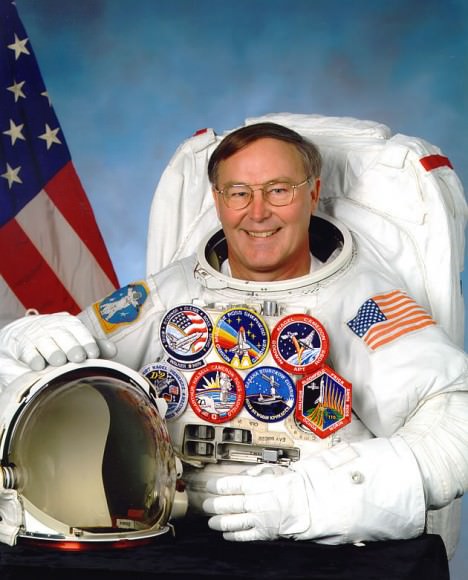
UT: You are obviously very dedicated to NASA. How does it feel to have the spaceflight records you have, and to have been a part the agency that is such an iconic part of America?
JR: The records are a byproduct of the what I said before; working hard and not giving up. I am and I was very dedicated to what our country was doing in space but I am somewhat frustrated that we are not doing more now. The records are quite frankly something that I wish I could have pushed much higher. I would have hoped to have flown many more times and done more spacewalks as well. Frankly, I’m disappointed that my records haven’t fallen and that those records aren’t continuing to be broken.
If we’re not continuing to push forward in space and do things more routinely and more aggressively, then as a country we are failing to be the leaders of the world that we should be in terms of leading humankind further into the Universe, learning more about the Universe and about ourselves, and potentially being able to live on other planets someday. While the records are nice — and it is kind of nice to put that in your bio that you hold the world record — it is not something that I hang onto, and like I said, I hope we will get back into a much more aggressive program that will push more people into space faster and farther.
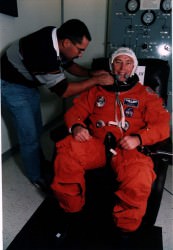
UT: Do you have a favorite mission or favorite moment that you cherish from all your spaceflights?
JR: That question is just like asking a mother which one of her seven children she likes best! Every one of my flights was unique and different. All of them were a lot of fun with great crews and great missions. If I had to pick one, it would probably be the first flight, just because it was my first. It was an exciting mission, a great crew and I got to go on my first spacewalk, which laid the foundation for even more spacewalks in the future. At the time I launched I was already assigned to another mission, so it was a great time in my career when I was still fairly young but was really starting to feel the success of all the hard work.
UT: What was the most unexpected thing or experience you had?
JR: I think the most unexpected thing — and I talk about it in the book — is the epiphany I had on my fourth spacewalk on my third space shuttle mission when I was high above the payload on a foot restraint on the end of the robotic arm. The rest of the crew was concentrating on working with (astronaut) Jay Asp who was doing some work in the payload bay. I had the chance to look into deep space. It was at night and I turned off my helmet-mounted lights and just looked at the Universe and the uncountable number of stars out there. And all of a sudden I had this sense come over me — it was totally unexpected, it wasn’t something I was thinking about or contemplating — but it was a sense that I was doing what God had intended me to do, being in space in a spacesuit, working to fix satellites and assemble things in space. What a reassurance that you picked the right path, and that you are doing exactly what you were intended to do!
For an engineer to have any feelings at all, and especially a feeling like that traveling at 5 miles a second above the Earth is pretty incredible.
UT: I really enjoyed the sidebar pieces in the book that were written by the people important in your life – your friend Jim, and your wife and children. How did you decide to include that, and did you have any trouble convincing them to be a part of the book?
JR: The book started out with John Norberg, my co-writer, coming down and doing a series of interviews with me and also with my family members and my best friend Jim Gentleman, and one of my two sisters in Indiana. Initially, John was going to write more of the book than it ended up being. It was a much more collaborative effort than I had anticipated. But those sidebars or insights from others was totally his idea and one that I entirely latched onto once we started writing. I think it is a great insight into the rest of the family and how we operated as a family. I’ve had this comment multiple times now from folks that these additional insights were especially enjoyable.
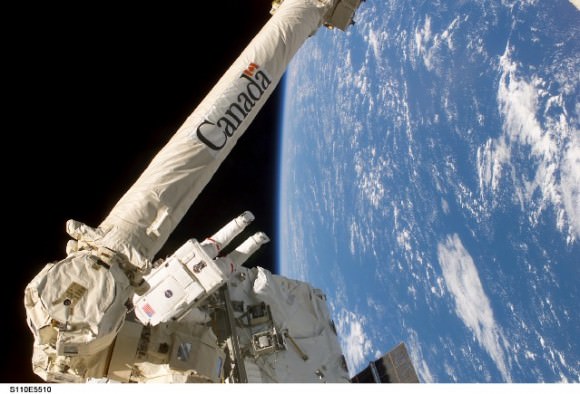
UT: Your daughter Amy also works at NASA, and has helped to create better gloves for spacewalking. How gratifying is that to have her be a part of NASA?
JR: I think any parent is pleased if one of their children decides to follow in their footsteps. I guess that somehow validates that what the parent has been doing was something they valued and thought was interesting and exciting. Amy was exposed to it and was never encouraged one way or the other to be part of NASA or not, so it was very satisfying to see her do that. It was equally gratifying for me for my wife Karen to get into the space program working for United Space Alliance as one of the support contractors, and as you read in the book she helped supply the food for the shuttle and the station.
You also might be interested to know that Amy was interviewed for the astronaut program in January. For this selection process they had around 6,000 people who applied and they narrowed it down to about 400 that they deemed most qualified, and from that 400 they brought in 120, and she made that cut.

They will further reduce the number down to about 50 that will be brought back in for a second round of additional interviews and screenings, mostly some fairly heavy medical testing, and then from that they will select about 10 or so in the middle of the year. So we are extremely excited for her and keeping our fingers crossed.
UT: You write in detail about the two shuttle accidents. How difficult were those two periods of time – both personally and for everyone in the astronaut office?
JR: It was a tremendous loss. The astronaut office is relatively small. At the time of those losses, we were in the neighborhood of about 100 people total, and you get to know folks pretty well. To have your friends doing what we all enjoyed and seeing them be lost and then learning that probably, had we been smarter or more diligent, we as an agency could have prevented both of those accidents. That is very hurtful.
You go through a lot of soul searching, especially after the Challenger accident when we were still very early in the shuttle program to lose a vehicle and friends that way. My family was still quite young and it makes you really do some soul searching about whether or not you should continue to do that and put your life and therefore your family at risk. We talked about it quite a bit as a family and fortunately we all agreed that it would be letting our friends down if we decided to pull out and go do something else.
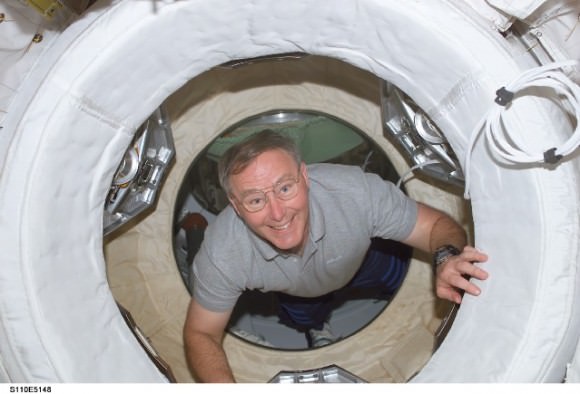
UT: You mentioned this earlier, and you don’t mince words in the book about your disappointment with the direction NASA is going. Have your thoughts changed any about the SLS?
JR: No, I still think that the agency is wandering in the forest. Most of the direction that we are getting from Congress is the direction that reinstituted the SLS and is pushing Orion forward. The administration is really pushing the commercial space aspect, and it still makes me very nervous that the commercial space guys may not pan out. It makes me nervous that NASA won’t have more control and insight on what is going on with the vehicles, from both a safety and operational perspective. It makes me nervous that we are planning to rely up on them solely to get to and from low Earth orbit, when in fact if they have an accident either with one of our crews or theirs, it could precipitate a lawsuit, which might put them into bankruptcy. Where would we be then?
So there are lots of reasons why I don’t think this is the right answer. I totally agree with commercial space if they want to go spend their own nickel and go do things, that is fine. As a government agency I think we should provide all the help and assistance that we can, but at the same time I don’t think we should be diverting resources of NASA’s programs to be paying for theirs. And that is what we are doing right now.
If we had not stopped the Constellation program, we would be in the process of getting ready to go launch an Orion right now. So what we are doing is delaying progress for the nation and what is going to happen in respect to commercial space is not at all certain. I frankly do not see any business model that would keep any of those commercial systems operating without a great underwriting and usage by NASA. And so I don’t see the logic in what is going on.
UT: Your faith is obviously very important to you, and I recall the one line you wrote, that you find it impossible to believe that everything you saw from space was created without God. In some circles, it seems to be that it is either science or religion that the two are hard to mix. But you obviously have no problem mixing the two in your life.
JR: Absolutely. I have had no problems along those lines whatsoever. I think the problems come when people try to read too literally passages in the Bible, and to not to just accept God on faith. So, somehow I think people try to limit God by reading an exact passage in the Bible, in a certain kind of Bible, when in fact the passage would read quite differently depending on what kind of Bible you are reading.
UT: Is there anything else that you feel is important for people to know about your book or your experiences in general?
JR: I hope people will read the book and enjoy it, number one! Secondly I hope they will get a better understanding of what it takes to make a spaceflight happen. But probably the most important thing is that I hope that it might help young adults and school age children interested in science and engineering. But the main emphasis of the book is to set goals for yourself, study hard, work hard and don’t give up too easily.
UT: Jerry, its been an honor to talk with you! Thank you very much.
JR: I’ve enjoyed it, thank you!
NASA’s Curiosity and Orion Shine at Presidential Inaugural Parade
Video caption: Preview of Mars Curiosity Parade Float. Jim Green, Director of the Science Mission Directorate Planetary Systems Division at NASA Headquarters, describes the replica of the Mars Curiosity Rover on the second NASA float in Monday’s (Jan 21, 2013) presidential inaugural parade. Parade photos below
Full scale models of NASA’s Curiosity Mars rover and the Orion crew capsule are participating in the 2013 Presidential Inaugural Parade on Monday, Jan 21, 2013, in Washington, DC – representing NASA’s robotic and human spaceflight endeavors.
The fantastically successful Curiosity rover is discovering widespread evidence for the ancient flow of liquid water on Mars.
The Orion multi-purpose capsule will take our astronauts back to the Moon and farther into space than ever.
NASA is the ONLY federal agency asked to be in the inaugural parade and now Curiosity is leading the NASA group with Orion after Curiosity.
Update 530 PM EDT – NASA’s 2 floats just passed by a cheering and waving President Obama & VP Biden at the reviewing stand in front of the White House – prominently near the front of the parade. See float photos from the parade below
Walking alongside both floats are members of the Curiosity team from NASA’s Jet Propulsion Laboratory – including ‘Mohawk Guy’ – and several current and former astronauts.
The participating astronauts are Alvin Drew, Serena Aunon, Kate Rubins, Mike Massimino, Lee Morin and Kjell Lindgren, as well as Leland Melvin, NASA’s associate administrator for Education, and John Grunsfeld, NASA’s associate administrator for Science.
The marching team for Curiosity includes Richard Cook-project manager (from JPL), Bobak Ferdowsi (otherwise known as ‘Mohawk Guy’)-flight director (from JPL), Dave Lavery – program executive (from NASA Headquarters) , Michael Meyer – program Scientist (from NASA Headquarters), Jennifer Trosper-mission manager (from JPL) and Ashwin Vasavada, Deputy Project Scientist (from JPL)
Image caption: Orion crew capsule float with NASA astronauts at the Presidential Inaugural parade on Jan 21, 2013 in Washington, DC. Credit: NASA
Image caption: Curiosity float with team members at the Presidential Inaugural parade on Jan 21, 2013 in Washington, DC. Credit: NASA
Be sure to check out NASA’s Flickr stream for many photos from the 2013 Inaugural Day festivities and parade – here and here
Here’s another video about the Curiosity float:
Image caption: Orion crew capsule arrives in Washington, DC, for Presidential Inaugural parade on Jan 21, 2013. Credit: NASA
Shenzhou-8 lands after China’s 1st Space Docking propelling Ambitious Human Spaceflight Agenda
[/caption]
China’s historic first docking mission in space ended in a complete success today (Nov. 17) following the safe landing of the unmanned Shenzhou-8 in Inner Mongolia. Today’s landing will robustly propel China’s space program forward and sets the stage for an ambitious agenda of human spaceflight missions in 2012 to the Tiangong-1 Space Lab and eventually to a hefty 100 ton Earth orbiting Space Station to be assembled by 2020.
Shenzhou-8 was launched to low Earth orbit on Nov. 1 atop a Long March 2F booster from the Jiuquan Satellite Launch Center in the Gobi Desert and successfully conducted China’s first ever rendezvous and docking mission in space with the nation’s Tiangong-1 Space Lab module on Nov. 3 while orbiting some 343 kilometers in altitude above Earth.
Gen. Chang Wanquan, the Commander in Chief of China’s human spaceflight program said, “The Shenzhou-8 capsule has safely returned to the main landing site at Inner Mongolia and the Tiangong-1/Shenzhou-8 rendezvous and docking mission has achieved full success!”
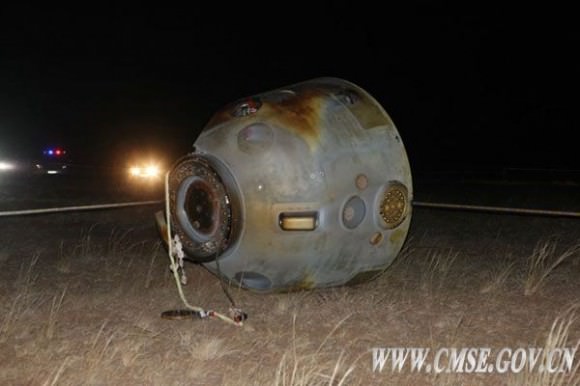
Chang leads the China Manned Space Engineering (CMSE) Project, the nation’s human spaceflight program. He is the Commanding Officer of the Tiangong-1/Shenzhou-8 Rendezvous and Docking Mission Headquarters, and director of the PLA (Peoples Liberation Army) General Armaments Department. The People Liberation Army directs China’s human spaceflight program.
Shenzhou-8 landed today at 7:30 pm. Beijing time in central Asia after flying nearly 17 days in earth orbit. Recovery crews reached the capsule within a few minutes of the parachute assisted touchdown.
Most of the flight was spent linked up to the Tiangong-1 Space Lab module – China’s first prototype space station.

After 12 days of joint orbital operations, Shenzhou-8 carried out a 2nd docking test to enable Chinese space engineers and mission controllers to gain further practice and experience in mastering the complex techniques involved in rendezvous and docking in space.
Shenzhou-8 disengaged from Tiangong-1 on Nov. 14, backed off to a distance of 140 meters (460 ft) and then carried out a re-docking about 30 minutes later. Controllers at the Beijing Aerospace Control Center monitored systems as Shenzhou-8 automatically re-approached Tiangong-1 for the second link up.
The main purpose of the second docking test was to confirm the performance of the rendezvous and docking procedures and hardware on Shenzhou-8 and Tiangong-1 under conditions of the glare of sunlight which are different compared to nighttime conditions of the first docking attempt.
Although the Shenzhou-8 flew unmanned during this flight, the capsule was fully human rated – even food and water are stored on board to simulate the presence of a human crew.
Today’s success sets the stage for possibly two Chinese manned missions to follow in 2012, namely Shenzhou-9 and Shenzhou-10.
Each Shenzhou can carry two or three astronauts. One of the missions is highly likely to include the first female Chinese astronaut.

Read Ken’s features about Shenzhou-8 & Tiangong-1
China completes 2nd Docking to Space Lab and sets Path to Manned flights in 2012
China Technology Surges Forward with Spectacular First Docking in Space
China launches Shenzhou-8 bound for Historic 1st Docking in Space
Shenzhou-8 rolled out for Blastoff to China’s 1st Space Station on November 1
Bizarre Video: China’s Tiangong 1 Space Lab Animation set to ‘America the Beautiful’ Soundtrack
China Blasts First Space Lab Tiangong 1 to Orbit
China set to ‘Leap Forward in Space’ as Tiangong 1 Rolls to Launch Pad
Decadal Survey for Human Spaceflight?
[/caption]
Over at Space Politics, Jeff Foust points out that a provision for an independent study about human spaceflight was quietly included in last year’s NASA authorization act. The parameters of such a study would be similar to the decadal surveys done by the astronomy and planetary science disciplines. Foust reports that last week such a concept for human spaceflight was debated at a small conference where NASA’s Phil McAlister from the Office of Program Analysis and Evaluation said, “I believe in this Academies-like study that will allow the human spaceflight community to come together, like the science community has done for years and years, effectively. With that kind of document and blueprint… then finally, maybe, we can get the long-term consensus required to actually finish one of these programs. That is my sincere hope.”
Would such a study be helpful in giving U.S. human spaceflight unwavering direction and goals that don’t change with each presidential administration?
The debate is continuing in the comment section on Foust’s article and on Twitter, and so far the lines are divided between this being a good idea or one that would never work for human spaceflight.
Some comments suggest this type of survey would be just another exercise on paper that will accomplish nothing – and would be a repeat of the Stafford Report or the Augustine Commission, where programs and direction is suggested, but since it isn’t “law” politicians would ignore it in favor of projects in their own districts.
Others said there isn’t a strong figure in human spaceflight, such as a Steve Squyres who led the recent planetary decadal survey (although someone suggested Wayne Hale or Bill Gerstenmaier).
On the other side of the debate, still others said that some kind of consensus review is needed in order to direct NASA’s priorities with human space flight, as there has been no clear sustainable direction since the decision to build the ISS. Someone suggested this would be helpful for the international partner, as well, to know what NASA might do next.
What are your views – would a decadal survey for US human spaceflight be a good idea?
Human Spaceflight Briefs
Quite a few things going on in the human spaceflight world, so will just post a few briefs:
Of course top on the agenda is that space shuttle Discovery is scheduled to lift-off on its last flight ever, for the STS-133 mission. Launch is scheduled for Monday, Nov. 1 at 4:40 p.m. EDT from Launch Pad 39A. The faulty fuel line that threatened to delay the mission has been fixed, so everything is go for the oldest of the shuttle fleet’s final mission, a trip to the International Space Station to bring up Robonaut 2 and a new module. We’ll keep you posted for the latest on launch day.
Learn more about the mission from our previous preview articles here and here, or at NASA’s website.
NASA Administrator Charlie Bolden took a trip to China (link to NASA’s website) in hopes of encouraging future cooperation between our two nations, but not sure if it did much good. Besides upsetting people who think he should be concentrating on the issues at home at NASA (from NASAWatch), a news report just came out that China says they are considering their own manned space station by 2020. (PhysOrg)
A Progress resupply ship launched to the ISS just yesterday, Oct. 27, and will meet up with the ISS in 3 days. It is carrying 2 tons of food, fuel and supplies for the Expedition 25 crew, and should dock at the Pirs Docking Compartment on Oct. 30. Watch the video of the launch below.
And here’s a “trailer” about Robonaut 2:


